- Home
- Vladimir Nabokov
Strong opinions Page 8
Strong opinions Read online
Page 8
Yes/
You once told, me after a class at Cornell that you'd been unable to read more than one hundred or so pages O’Finnegans Wake. As it happens, on page 104 there begins a section very close in spirit to Pale Fire, and I wonder if you've ever read this, or seen the similarity. It is the history of all the editions and interpretations of Anna Livia Plurabelle's Letter (or «Mamafesta», text included). Among the three pages listing the various titles of ALP's letter, Joyce includes Try our Taal on a Taub (which we are already doing), and I wondered if you would comment on Swift's contribution to the literature about the corruption of learning and literature. Is it only a coincidence that Kinbote's «Forword» to Pale Fire is dated «Oct. 19», which is the date of Swift's death?
I finished Finnegans Wake eventually. It has no inner connection with Pale Fire. I think it is so nice that the day on which Kinbote committed suicide (and he certainly did after putting the last touches to his edition of the poem) happens to be both the anniversary of Pushkin’s Lyceum and that of «poor old man Swift» 's death, which is news to me (but see variant in note to line 231). In common with Pushkin, I am fascinated by fatidic dates. Moreover, when dating some special event in my novels I often choose a more or less familiar one as a point de repere (which helps to check a possible misprint in the proofs), as for instance «April 1» in the diary of Hermann in Despair.
Mention of Swift moves me to ask about the genre The Pale Fire; as a «monstrous semblance of a novel», do you see it in terms of some tradition or form?
The form of Pale Fire is specifically, if not generically, new. 1 would like to take this pleasant opportunity to correct the following misprints in the Putnam edition, 1962, second impression: On page 137, end of note to line 143, «rustic» should be «rusty». On page 151, «Catskin Week» should be «Catkin Week». On page 223, the line number in the reference at the end of the first note should be not «550» but «549». On page 237, top, «For» should be «for». On page 241, the word «lines» after «disentprise» should be «rhymes». And on page 294, the comma after «Arnold» should be replaced by an open parenthesis. Thank you.2 (Since Mr. Nahokov has opened an F.rrata Department, the following misprints from the Lancer Books paperback edition of Pale Fire, 1963, should be noted: on page 17, fifth line from bottom of middle paragraph, «sad» should be «saw». On page 60, note to lines 4748, line 21 should be «burst an appendix», not «and». On page 111, fourth line of note to line 172, «inscription» is misspelled. On page 158, last sentence of note to line 493, «filfth» should be «filth». Nabokov's other books are relatively free from misprints, except for the Popular Library paperback edition of The Gift, 1963, whose blemishes are too numerous to mention.)
Do you make a clear distinction between satire and parody? I ask this because you have so often said you do not wish to be taken as a «moral satirist», and yet parody is so central to your vision.
Satire is a lesson, parody is a game.
Chapter Ten in The Real Life of Sebastian Knight contains a wonderful description of how parody functions in your own novels. But your sense of what “parody” means seems to stretch the usual definition, as when Cincinnatus in Invitation to a Beheading tells his mother, «You're still only a parody . . . Just like this spider, just like those bars, just like the striking of that clock. « All art, then, or at least all attempts at a «realistic» art, would seem to produce a distortion, a «parody». Would you expand on what you mean by «parody» and why, as Fyodor says in The Gift, «The spirit of parody always goes along with genuine poetry»?
When the poet Cincinnatus C, in my dreamiest and most poetical novel, accuses (not quite fairly) his mother of being a parody, he uses the word in its familiar sense of «grotesque imitation». When Fyodor, in The Gift, alludes to that «spirit of parody» which plays iridescently around the spray of genuine «serious» poetry, he is referring to parody in the sense of an essentially lighthearted, delicate, mockingbird game, such as Pushkin's parody of Derzhavin in Exegi Monumentum.
What is your opinion of Joyces parodies? Do you see any difference in the artistic effect of scenes such as the maternity hospital and the beach interlude with Gerty Macdowell? Are you familiar with the work of younger American writers who have been influenced by both you and Joyce, such as Thomas Pynchon (a Comellian, Class of '59, who surely was in Literature 312), and do you have any opinion on the current ascendancy of the so-called parodynovel (John Earth, for instance)?
The literary parodies in the Maternal Hospital chapter are on the whole jejunish. Joyce seems to have been hampered by the general sterilized tone he chose for that chapter, and this somehow dulled and monotonized the inlaid skits. On the other hand, the frilly novelette parodies in the Masturbation scene are highly successful; and the sudden junction of its cliches with the fireworks and tender sky of real poetry is a feat of genius. I am not familiar with the works of the two other writers you mention.3 (3 Mrs. Nabokov, who graded her husband's examination papers, did remember Pynchon, but only for his «unusual» handwriting: half printing, half script.)
Why, in Pale Fire, do you call parody the «last resort of wit»?
It is Kinbote speaking. There are people whom parody upsets.
Are the composition of Lolita and Speak, Memory, two very different books about the spell exerted by the past, at all connected in the way that the translations of The Song of Igor's Campaign and Eugene Onegin are related to Pale Fire? Had you finished all the notes to Onegin before you began Pale Fire?
Yes, I had finished all my notes to Onegin before I began Pale Fire. Flaubert speaks in one of his letters, in relation to a certain scene in Madame Bovary, about the difficulty of painting couleur sur couleur. This in a way is what I tried to do in retwisting my own experience when inventing Kinbote. Speak, Memory is strictly autobiographic. There is nothing autobiographic in Lolita.
Although selfparody seems to be a vital part of your work, you are a writer who believes passionately in the primacy of the imagination. Yet your novels are filled with little details that seem to have been purposely pulled from your own life, as a reading of Speak, Memory makes clear, not to mention the overriding patterns, such as the lepidopteral motif, which extend through so many of your books. They seem to partake of something other than the involuted voice, to suggest some clearly held idea about the interrelationship between selfknowledge and artistic creation, self-parody and identity. Would you comment on this, and the significance of autobiographical hints in works of art that are literally not a utobiographical?
I would say that imagination is a form of memory. Down, Plato, down, good dog. An image depends on the power of association, and association is supplied and prompted by memory. When we speak of a vivid individual recollection we are paying a compliment not to our capacity of retention but to Mnemosyne's mysterious foresight in having stored up this or that element which creative imagination may want to use when combining it with later recollections and inventions. In this sense, both memory and imagination are a negation of time.
C. F. Snow has complained about the gulf between the «two cultures», the literary and scientific communities. As someone who has bridged this gulf, do you see the sciences and humanities as necessarily opposed? Have your experiences as a scientist influenced your performance as an artist? Is it fanciful to use the vocabulary of physics in describing the structures of some of your novels?
I might have compared myself to a Colossus of Rhodes bestriding the gulf between the thermodynamics of Snow and the Laurentomania of Leavis, had that gulf not been a mere dimple of a ditch that a small frog could straddle. The terms «physics» and «egghead» as used nowadays evoke in me the dreary image of applied science, the knack of an electrician tinkering with bombs and other gadgets. One of those «Two Cultures» is really nothing but utilitarian technology; the other is Bgrade novels, ideological fiction, popular art. Who cares if there exists a gap between such «physics» and such «humanities»? Those Eggheads are terrible Philistines. A real good head is not oval
but round.
Where, through what window, do lepidoptera come in?
My passion for lepidopterological research, in the field, in the laboratory, in the library, is even more pleasurable than the study and practice of literature, which is saying a good deal. Lepidopterists are obscure scientists. Not one is mentioned in Webster. But never mind. I have reworked the classification of various groups of butterflies, have described and figured several species and subspecies. My names for the microscopic organs that I have been the first to see and portray have safely found their way into biological dictionaries (compare this to the wretched entry under «nymphet» in Webster's latest edition). The tactile delights of precise delineation, the silent paradise of the camera lucida, and the precision of poetry in taxonomic description represent the artistic side of the thrill which accumulation of new knowledge, absolutely useless to the layman, gives its first begetter. Science means to me above all natural science. Not the ability to repair a radio set; quite stubby fingers can do that. Apart from this basic consideration, I certainly welcome the free interchange of terminology, between any branch of science and any raceme of art. There is no science without fancy, and no art without facts. Aphoristicism is a symptom of arteriosclerosis.
In Pale Fire, Kinbote complains that «The coming of summer represented a problem in optics». The Eye is welltitled, since you plumb these problems throughout your fiction; the apprehension of «reality» is a miracle of vision, and consciousness is virtually an optical instrument in your work. Have you studied the science of optics at all, and would you say something about your own visual sense, and how you feel it has served your fiction?
I am afraid you are quoting this out of context, Kinbote was simply annoyed by the spreading foliage of summer interfering with his Tompeeping. Otherwise you are right in suggesting that 1 have good eyes. Doubting Tom should have worn spectacles. It is true, however, that even with the best of visions one must touch things to be quite sure of «reality».
You have said that Alain Robbe-Grillet and Jorge Luis Borges are among your favorite contemporary writers. Do you find them to be at all similar? Do you think Robbe-Grillet's novels are as free of «psychology» as he claims?
Robbe Grillet's claims are preposterous. Those manifestos, those dodoes, die with the dadas. His fiction is magnificently poetical and original, and the shifts of levels, the interpenetration of successive impressions and so forth belong of course to psychology — psychology at its best. Borges is also a man of infinite talent, but his miniature labyrinths and the roomy ones of Robbe-Grillet are quite differently built, and the lighting is not the same.
I recall your humorous remarks at Cornell about two writers experiencing «telepathy» (1 believe you were comparing Dickens and Flaubert). You and Borges were both born in 1899 (but so was Ernest Hemingway!). Your Bend Sinister and Borges' story «The Circular Ruins» are conceptually similar, but you do not read Spanish and that story was first translated into English in 1949, two years after Bend Sinister’s birth, just as in Borges' «The Secret Miracle», Hladik has created a verse drama uncannily similar to your recently Englished play, The Waltz Invention, which precedes Borges' tale, but which he could not have read in Russian. When were you first aware of Borges' fictions, and have you and he had any kind of association or contact, other than telepathic?
I read a Borges story for the first time three or four years ago. Up till then I had not been aware of his existence, nor do I believe he knew, or indeed knows, anything about me. That is not very grand in the way of telepathy. There are affinities between Invitation to a Beheading and The Castle, but I had not yet read Kafka when I wrote my novel. As to Hemingway, I read him for the first time in the early forties, something about bells, balls, and bulls, and loathed it. Later I read his admirable «The Killers» and the wonderful fish story which I was asked to translate into Russian but could not for some reason or other.
Your first book was a translation of Lewis Carroll into Russian. Do you see any affinities between Carrolls idea of «nonsense» and your bogus or «mongrel» languages in Bend Sinister and Pale Fire?
In common with many other English children (I was an English child) I have been always very fond of Carroll. No, I do not think that his invented language shares any roots with mine. He has a pathetic affinity with H. H. but some odd scruple prevented me from alluding in Lolita to his perversion and to those ambiguous photographs he took in dim rooms. He got away with it, as so many other Victorians got away with pederasty and nympholepsy. His were sad scrawny little nymphets, bedraggled and halfundressed, or rather semiundraped, as if participating in some dusty and dreadful charade.
You have had wide experience as a translator and have made fictive use of translation. What baste problems of existence do you find implicit in the art and act of translation?
There is a certain small Malayan bird of the thrush family which is said to sing only when tormented in an unspeakable way by a specially trained child at the annual Feast of Flowers. There is Casanova making love to a harlot while looking from a window at the nameless tortures inflicted on Damiens. These are the visions that sicken me when I read the «poetical» translations from martyred Russian poets by some of my famous contemporaries. A tortured author and a deceived reader, this is the inevitable outcome of arty paraphrase. The only object and justification of translation is the conveying of the most exact information possible and this can be only achieved by a literal translation, with notes.
Mention of translation brings me to one of the Kinbotian problems faced by critics who comment on your Russian novels in translation, but who themselves have no Russian, It has been said that translations such as The Defense and Despair must contain many stylistic revisions (certainly the puns), and moreover are in general much richer in language than Laughter in the Dark, written at about the same time but, unlike the others, translated in the thirties. Would you comment on this? If the style of Laughter in the Dark suggests it should have preceded Despair, perhaps it actually was written much earlier: in the BBC interview of four years ago,4* you said that you wrote Laughter in the Dark when you were twentysix, which would have been 1925, thus making it your first novel. Did you actually write it this early, or is the reference to age a slip in memory, no doubt caused by the distracting presence of the BBC machinery. (* 4 Peter Duval-Smith, «Vladimir Nabokov on his Life and Work», Listener, LXVIII (Nov. 22, 1962), 85658. Reprinted as «What Vladimir Nabokov Thinks of his Work», Vogue, CXLI (March 1, 1963), 15255.)
I touched up details here and there in those novels and reinstated a scene in Despair, as the Foreword explains. That «twentysix» is certainly wrong. It is either a telescopation or I must have been thinking of Mashenka, my first novel written in 1925. The Russian original version (Kamera Obskura) of Laughter in the Dark was written in 1931, three years before Otchayanie (Despair), and an English translation by Winifred Roy, insufficiently revised by me, appeared in London in 1936. A year later, on the Riviera, I attempted — not quite successfully — to English the thing anew for BobbsMerrill, who published it in New York in 1938.
There is a parenthetical remark in Despair about a «vulgar, mediocre Herzog. « Is that a bit of added fun about a recent best seller?
Herzog means «Duke» in German and I was speaking of a conventional statue of a German Duke in a city square.
Since the reissued edition of Laughter in the Dark is not graced by one of your informative forewords, would you tell us something about the book's inception and the circumstances under which you wrote it? Commentators are quick to suggest similarities between Margot and Lolita, but I'm much more interested in the kinship between Axel Rex and Quilly. Would you comment on this, and perhaps on the other perverters of the imagination one finds throughout your work, all of whom seem to share Rex's evil qualities.
Yes, some affinities between Rex and Quilty exist, as they do between Margot and Lo. Actually, of course, Margot was a common young whore, not an unfortunate little Lolita. Anyway I do not th
ink that those recurrent sexual oddities and morbidities are of much interest or importance. My Lolita has been compared to Emmie in Invitation, to Mariette in Bend Sinister, and even to Colette in Speak, Memory — the last is especially ludicrous. But I think it might have been simply English jollity and leg-pulling.5* (5* A reference to Kingsley Amis' review of Lolita, «She was a Child and I was a Child», Spectator, CCIII (Nov. 6, 1959), p. 636.)
The Doppelganger motif figures prominently throughout your fiction; in Pale Fire one is tempted to call it a Tripling (at least). Would you say that Laughter in the Dark is your earliest Double fiction?
I do not see any Doubles in Laughter in the Dark. A lover can be viewed as the betrayed party's Double but that is pointless.
Would you care to comment on how the Doppelganger motif has been both used and abused from Poe, Hoffmann, Andersen, Dostoevski, Gogol, Stevenson, and Melville, down to Conrad and Mann? Which Doppelganger fictions would you single out for praise?
The Doppelganger subject is a frightful bore.
What are your feelings about Dostoevski's celebrated The Double; after all, Hermann in Despair considers it as a possible title for his manuscript.
Dostoevski's The Double is his best work though an obvious and shameless imitation of Gogol's «Nose». Felix in Despair is really a false double.
Speaking of Doubles brings me to Pnin, which in my experience has proved to be one of your most popular novels and at the same time one of your most elusive to those readers who fail to see the relationship of the narrator and the characters (or who fail to even notice the narrator until it's too late). Four of its seven chapters were published in The New Yorker over a considerable period {195557), but the allimportant last chapter, in which the narrator takes control, is only in the book. I'd be most interested to know if the design o/Pnin was complete while the separate sections were being published, or whether your full sense of its possibilities occurred later.

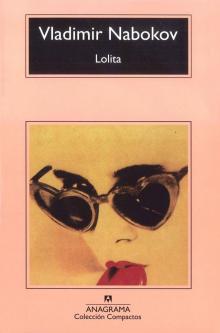 Lolita
Lolita Laughter in the Dark
Laughter in the Dark Despair
Despair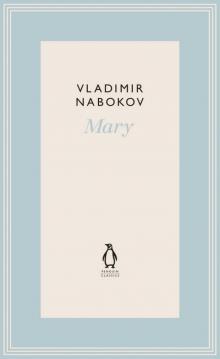 Mary
Mary The Enchanter
The Enchanter Pnin
Pnin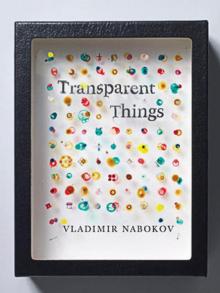 Transparent Things
Transparent Things The Real Life of Sebastian Knight
The Real Life of Sebastian Knight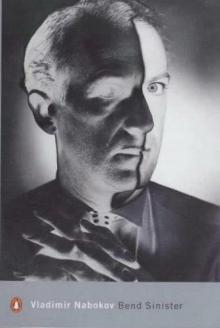 Bend Sinister
Bend Sinister Invitation to a Beheading
Invitation to a Beheading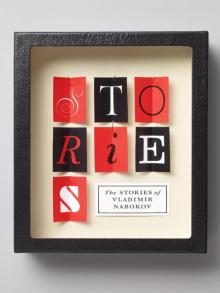 The Stories of Vladimir Nabokov
The Stories of Vladimir Nabokov The Eye
The Eye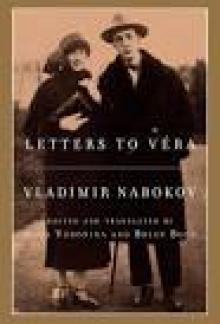 Letters to Véra
Letters to Véra Speak, Memory
Speak, Memory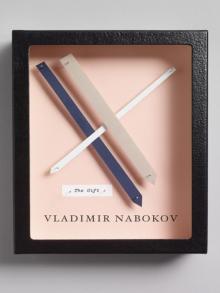 The Gift
The Gift The Luzhin Defense
The Luzhin Defense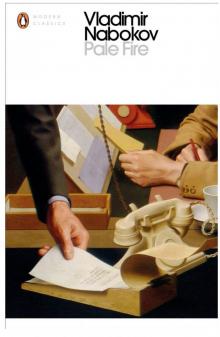 Pale Fire
Pale Fire Glory
Glory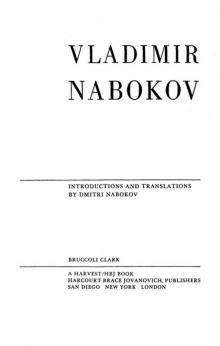 Man From the USSR & Other Plays
Man From the USSR & Other Plays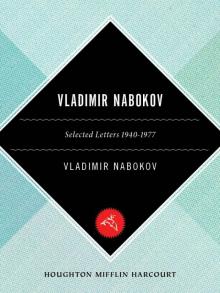 Vladimir Nabokov: Selected Letters 1940-1977
Vladimir Nabokov: Selected Letters 1940-1977 Strong opinions
Strong opinions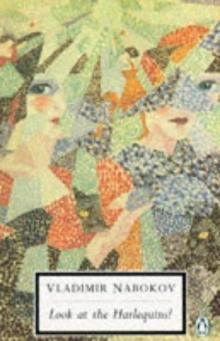 Look at the Harlequins!
Look at the Harlequins! The Tragedy of Mister Morn
The Tragedy of Mister Morn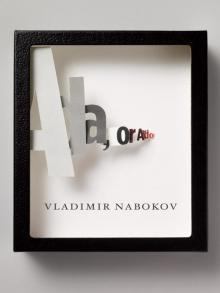 Ada, or Ardor
Ada, or Ardor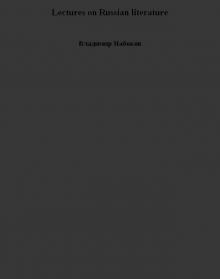 Lectures on Russian literature
Lectures on Russian literature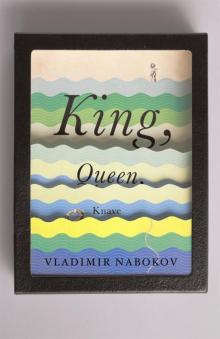 King, Queen, Knave
King, Queen, Knave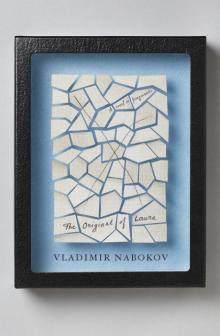 The Original of Laura
The Original of Laura